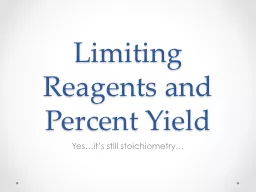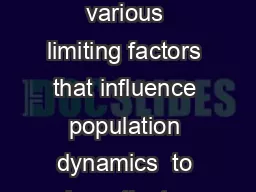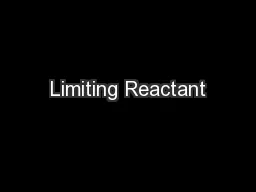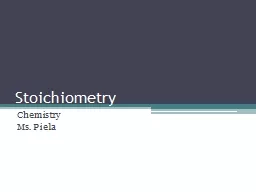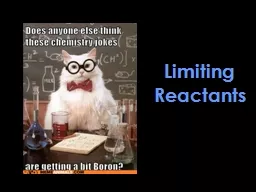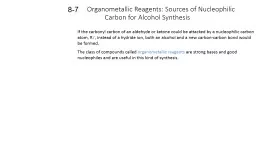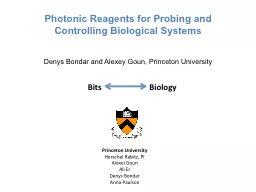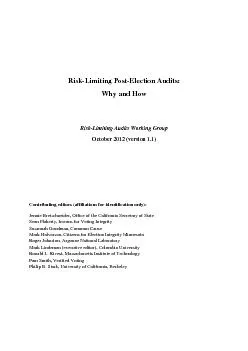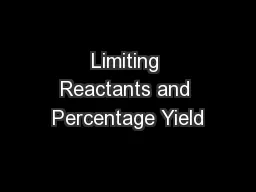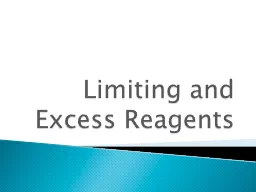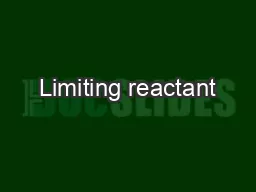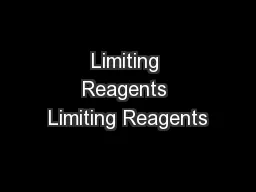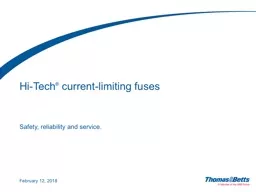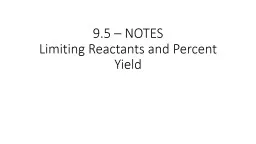PPT-Limiting Reagents and Percent Yield
Author : danika-pritchard | Published Date : 2017-06-05
Yesits still stoichiometry Think about making grilled cheese To make a decent grilled cheese sandwich you need two pieces of bread 2 pieces of cheese and 1 pat
Presentation Embed Code
Download Presentation
Download Presentation The PPT/PDF document "Limiting Reagents and Percent Yield" is the property of its rightful owner. Permission is granted to download and print the materials on this website for personal, non-commercial use only, and to display it on your personal computer provided you do not modify the materials and that you retain all copyright notices contained in the materials. By downloading content from our website, you accept the terms of this agreement.
Limiting Reagents and Percent Yield: Transcript
Download Rules Of Document
"Limiting Reagents and Percent Yield"The content belongs to its owner. You may download and print it for personal use, without modification, and keep all copyright notices. By downloading, you agree to these terms.
Related Documents

